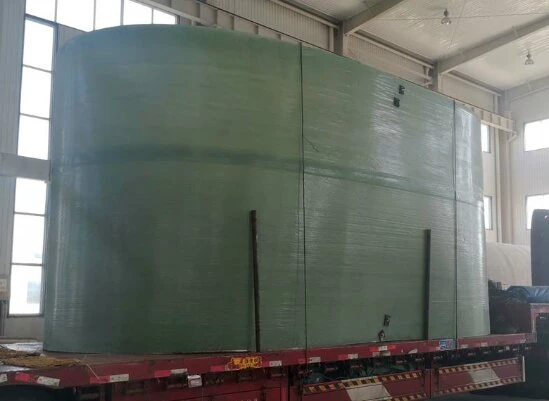
-
 Afrikaans
Afrikaans -
 Albanian
Albanian -
 Amharic
Amharic -
 Arabic
Arabic -
 Armenian
Armenian -
 Azerbaijani
Azerbaijani -
 Basque
Basque -
 Belarusian
Belarusian -
 Bengali
Bengali -
 Bosnian
Bosnian -
 Bulgarian
Bulgarian -
 Catalan
Catalan -
 Cebuano
Cebuano -
 China
China -
 China (Taiwan)
China (Taiwan) -
 Corsican
Corsican -
 Croatian
Croatian -
 Czech
Czech -
 Danish
Danish -
 Dutch
Dutch -
 English
English -
 Esperanto
Esperanto -
 Estonian
Estonian -
 Finnish
Finnish -
 French
French -
 Frisian
Frisian -
 Galician
Galician -
 Georgian
Georgian -
 German
German -
 Greek
Greek -
 Gujarati
Gujarati -
 Haitian Creole
Haitian Creole -
 hausa
hausa -
 hawaiian
hawaiian -
 Hebrew
Hebrew -
 Hindi
Hindi -
 Miao
Miao -
 Hungarian
Hungarian -
 Icelandic
Icelandic -
 igbo
igbo -
 Indonesian
Indonesian -
 irish
irish -
 Italian
Italian -
 Japanese
Japanese -
 Javanese
Javanese -
 Kannada
Kannada -
 kazakh
kazakh -
 Khmer
Khmer -
 Rwandese
Rwandese -
 Korean
Korean -
 Kurdish
Kurdish -
 Kyrgyz
Kyrgyz -
 Lao
Lao -
 Latin
Latin -
 Latvian
Latvian -
 Lithuanian
Lithuanian -
 Luxembourgish
Luxembourgish -
 Macedonian
Macedonian -
 Malgashi
Malgashi -
 Malay
Malay -
 Malayalam
Malayalam -
 Maltese
Maltese -
 Maori
Maori -
 Marathi
Marathi -
 Mongolian
Mongolian -
 Myanmar
Myanmar -
 Nepali
Nepali -
 Norwegian
Norwegian -
 Norwegian
Norwegian -
 Occitan
Occitan -
 Pashto
Pashto -
 Persian
Persian -
 Polish
Polish -
 Portuguese
Portuguese -
 Punjabi
Punjabi -
 Romanian
Romanian -
 Russian
Russian -
 Samoan
Samoan -
 Scottish Gaelic
Scottish Gaelic -
 Serbian
Serbian -
 Sesotho
Sesotho -
 Shona
Shona -
 Sindhi
Sindhi -
 Sinhala
Sinhala -
 Slovak
Slovak -
 Slovenian
Slovenian -
 Somali
Somali -
 Spanish
Spanish -
 Sundanese
Sundanese -
 Swahili
Swahili -
 Swedish
Swedish -
 Tagalog
Tagalog -
 Tajik
Tajik -
 Tamil
Tamil -
 Tatar
Tatar -
 Telugu
Telugu -
 Thai
Thai -
 Turkish
Turkish -
 Turkmen
Turkmen -
 Ukrainian
Ukrainian -
 Urdu
Urdu -
 Uighur
Uighur -
 Uzbek
Uzbek -
 Vietnamese
Vietnamese -
 Welsh
Welsh -
 Bantu
Bantu -
 Yiddish
Yiddish -
 Yoruba
Yoruba -
 Zulu
Zulu
Feb . 18, 2025 05:46
Back to list
frp chimney proves to be durable and efficient.
When considering the infrastructure requirements for industrial applications, the choice of materials is critical for durability and efficiency. Among the various options available, FRP (Fiber Reinforced Plastic) chimneys have gained prominence. Their unique composite structure offers several advantages over traditional materials like steel or concrete, making them a compelling choice for industries seeking longevity and cost-effectiveness.
Beyond the practical advantages, FRP chimneys offer unparalleled design flexibility. Manufacturing processes allow for precise customization in terms of shape, size, and thickness to meet specific operational requirements. This capacity for tailored design helps industries optimize aerodynamics and enhance the performance of emission systems, promoting cleaner and more efficient energy consumption. Experts in environmental engineering highlight the ability of FRP to accommodate complex designs without compromising strength or durability, ensuring efficient flue gas handling systems that align with environmental compliance. From an expertise standpoint, the proficiency involved in manufacturing and installing FRP chimneys is continually evolving. Industry professionals are providing detailed training and protocols to ensure that FRP chimneys meet the highest standards of performance and safety. The authoritative presence of FRP manufacturers, often working alongside regulatory bodies, reflects their commitment to maintaining stringent quality controls and certifications. This cooperative approach fortifies trust among clients, ensuring that the FRP solutions they employ are not only state-of-the-art but also backed by industry-wide credibility. Moreover, real-world testimonials illustrate the impactful transition to FRP chimneys. In various sectors, from chemical processing to power generation, users have reported significant improvements in operational sustainability and cost management. These testimonials, enriched by data-driven outcomes, function as a testament to the trustworthiness of FRP chimneys, validating their adoption in diverse industrial contexts. In summary, FRP chimneys stand as a testament to innovation in industrial material science, offering robustness, adaptability, and an environmentally conscious solution. Their adoption continues to rise owing to the compelling blend of efficiency and reliability they bring to complex industrial ecosystems. As experts and seasoned practitioners advocate for their benefits, FRP chimneys position themselves at the forefront of infrastructure material options, embodying the future of industrial resilience and operational excellence.


Beyond the practical advantages, FRP chimneys offer unparalleled design flexibility. Manufacturing processes allow for precise customization in terms of shape, size, and thickness to meet specific operational requirements. This capacity for tailored design helps industries optimize aerodynamics and enhance the performance of emission systems, promoting cleaner and more efficient energy consumption. Experts in environmental engineering highlight the ability of FRP to accommodate complex designs without compromising strength or durability, ensuring efficient flue gas handling systems that align with environmental compliance. From an expertise standpoint, the proficiency involved in manufacturing and installing FRP chimneys is continually evolving. Industry professionals are providing detailed training and protocols to ensure that FRP chimneys meet the highest standards of performance and safety. The authoritative presence of FRP manufacturers, often working alongside regulatory bodies, reflects their commitment to maintaining stringent quality controls and certifications. This cooperative approach fortifies trust among clients, ensuring that the FRP solutions they employ are not only state-of-the-art but also backed by industry-wide credibility. Moreover, real-world testimonials illustrate the impactful transition to FRP chimneys. In various sectors, from chemical processing to power generation, users have reported significant improvements in operational sustainability and cost management. These testimonials, enriched by data-driven outcomes, function as a testament to the trustworthiness of FRP chimneys, validating their adoption in diverse industrial contexts. In summary, FRP chimneys stand as a testament to innovation in industrial material science, offering robustness, adaptability, and an environmentally conscious solution. Their adoption continues to rise owing to the compelling blend of efficiency and reliability they bring to complex industrial ecosystems. As experts and seasoned practitioners advocate for their benefits, FRP chimneys position themselves at the forefront of infrastructure material options, embodying the future of industrial resilience and operational excellence.
Related Products









